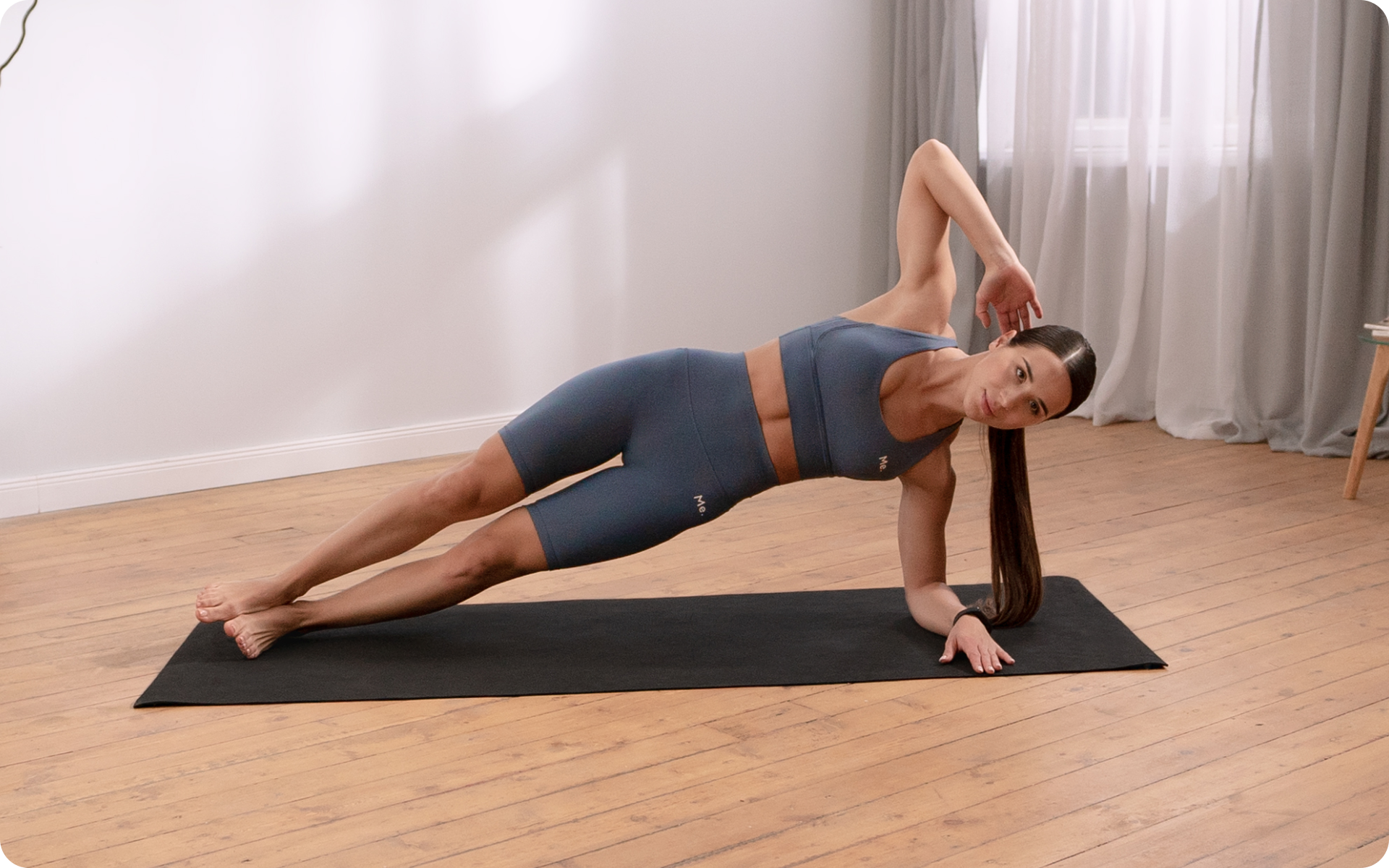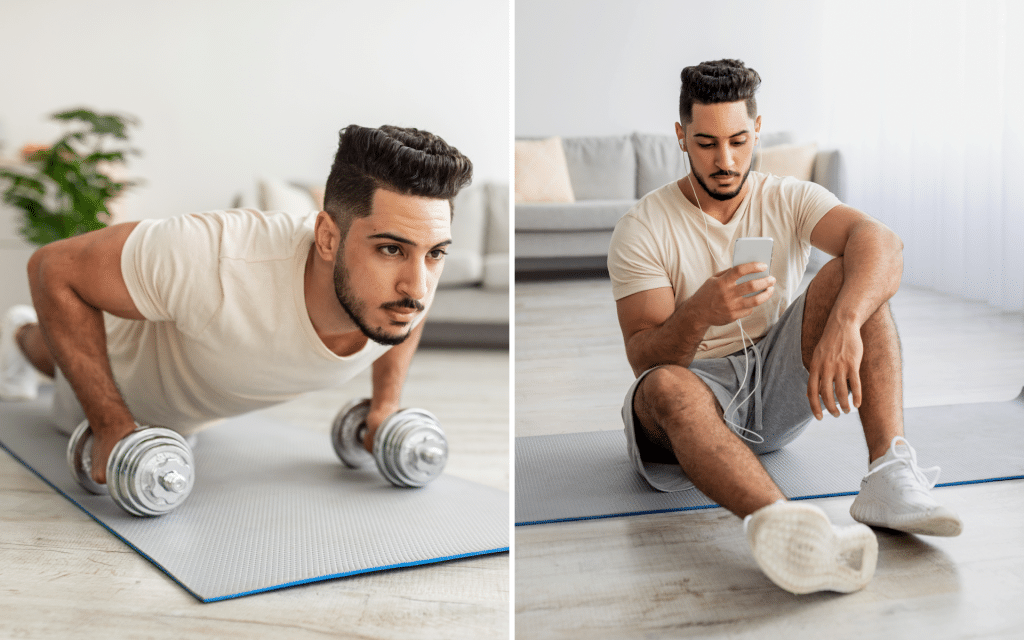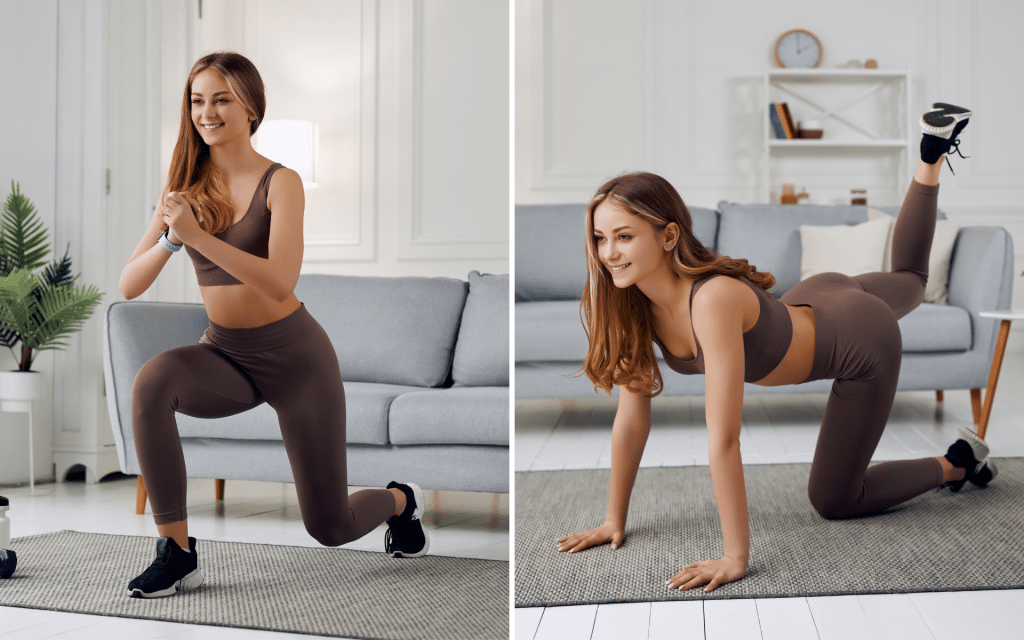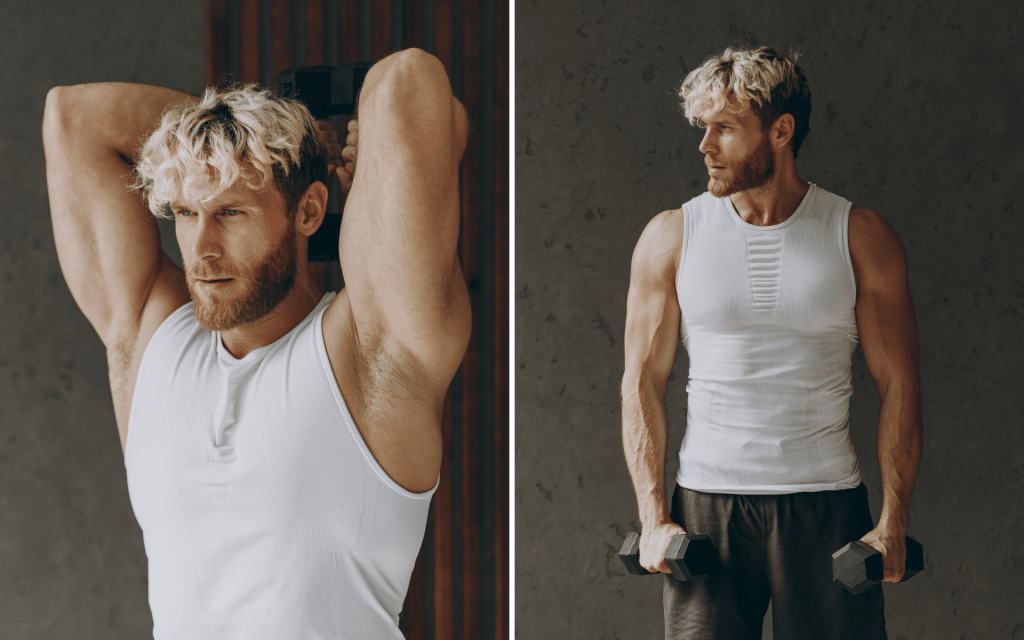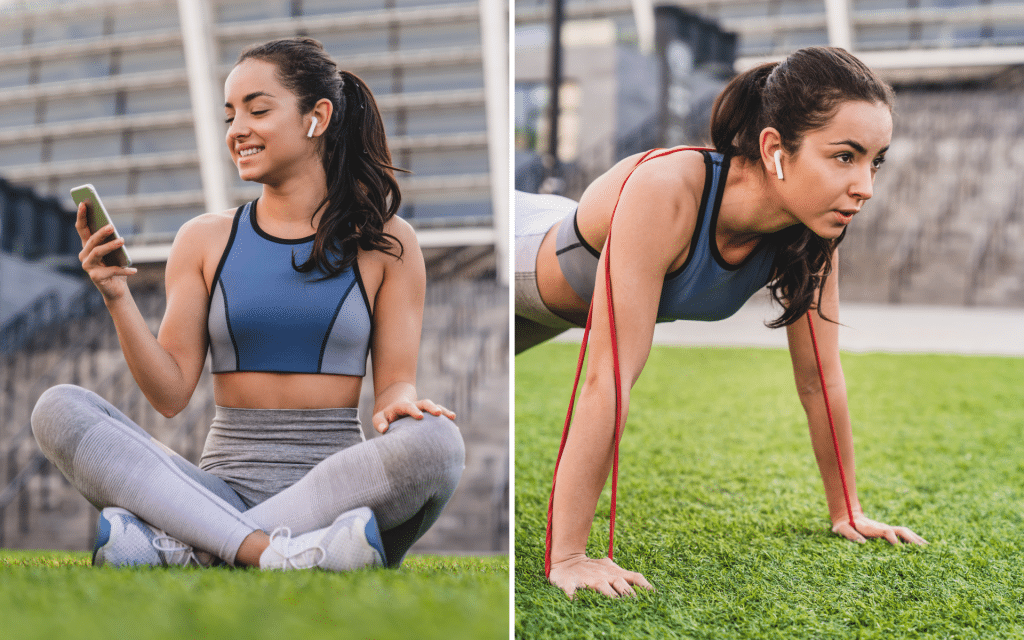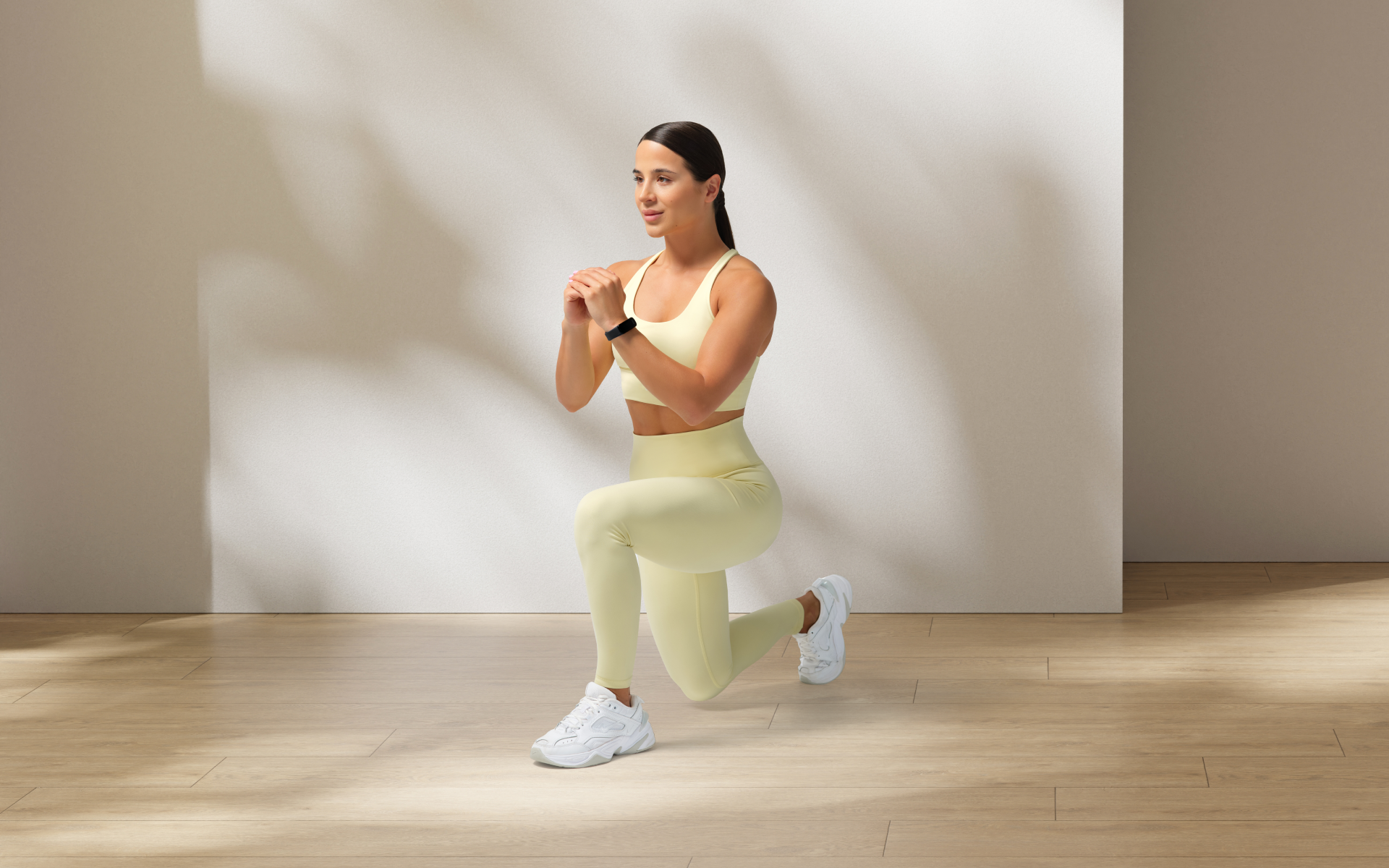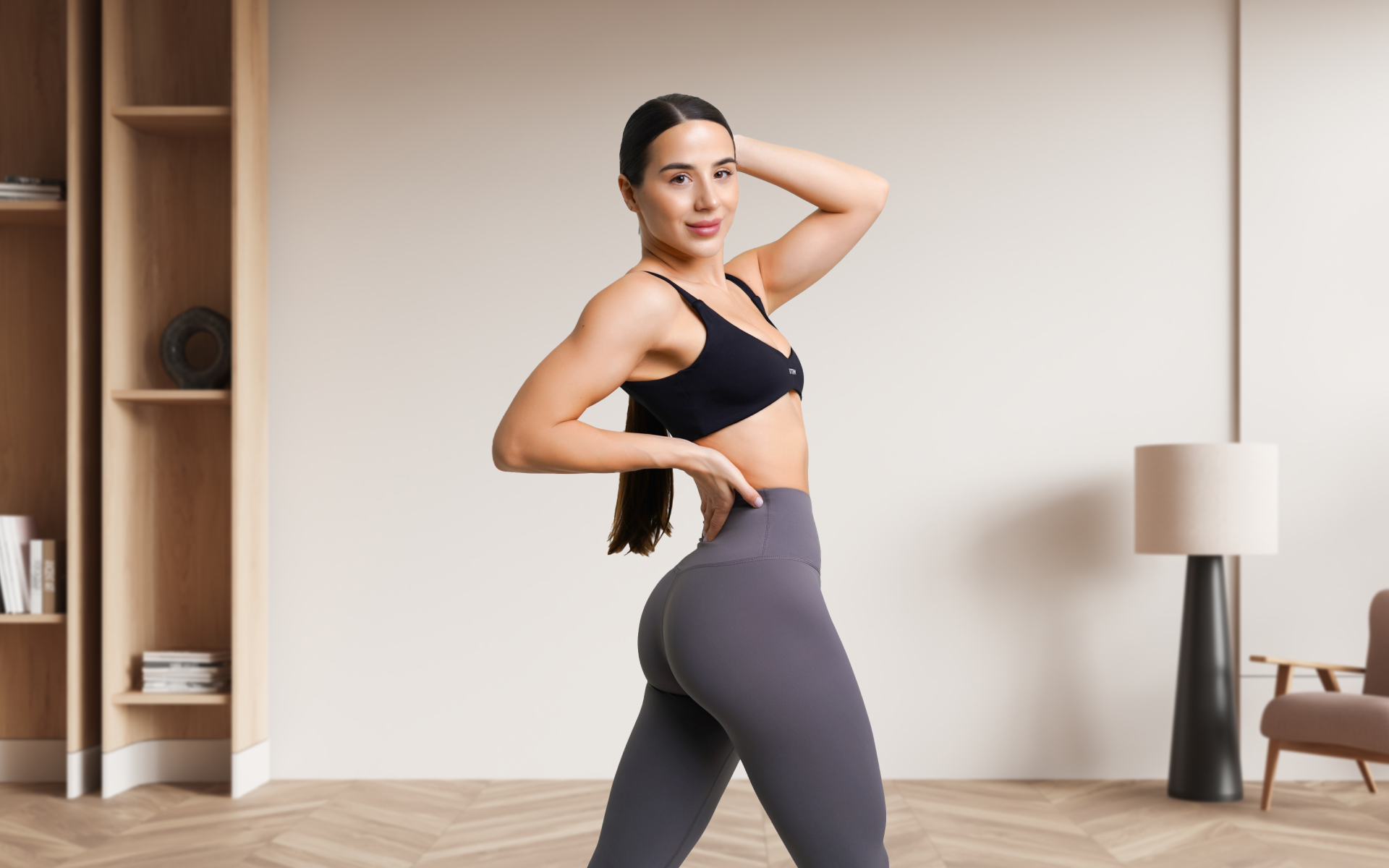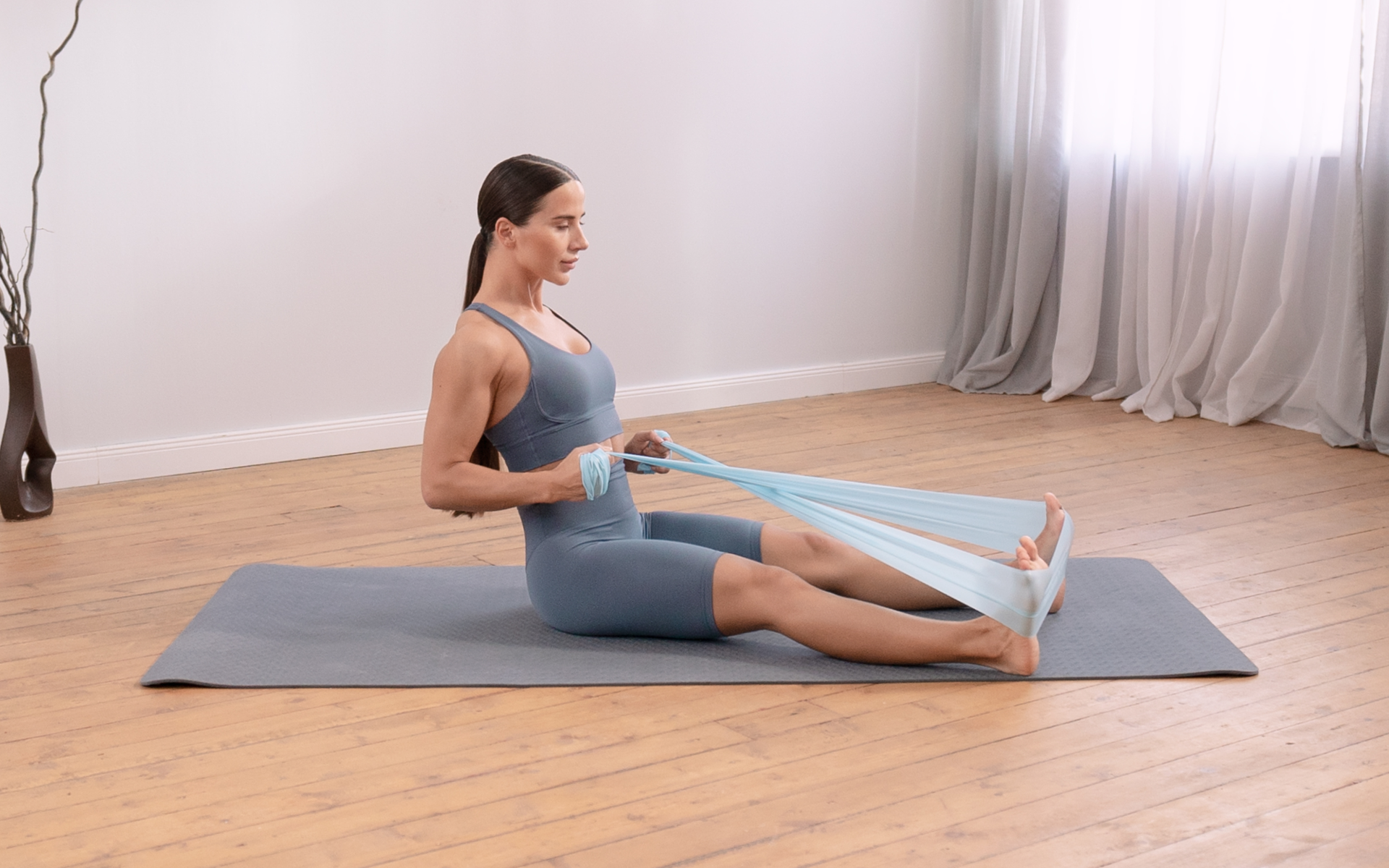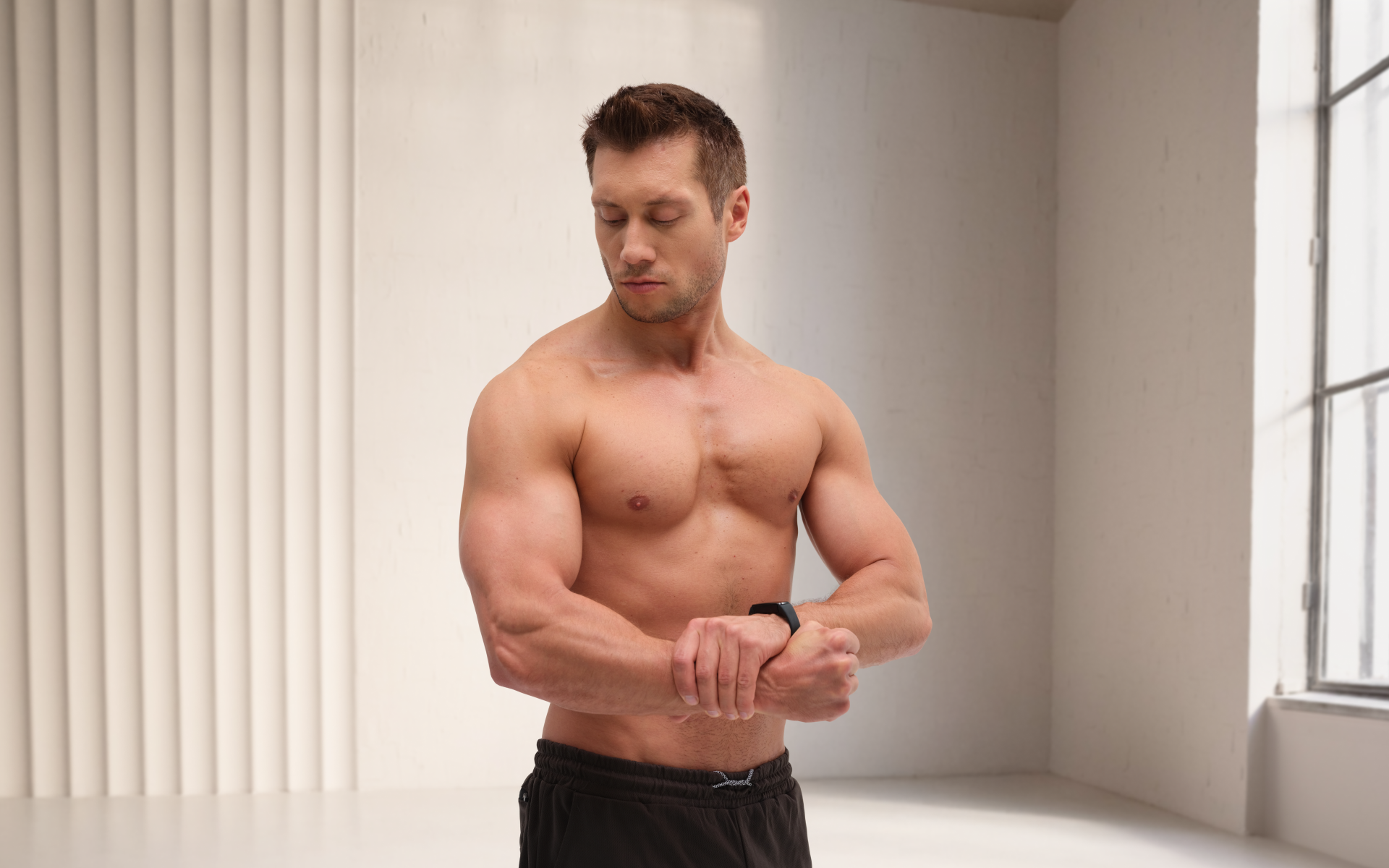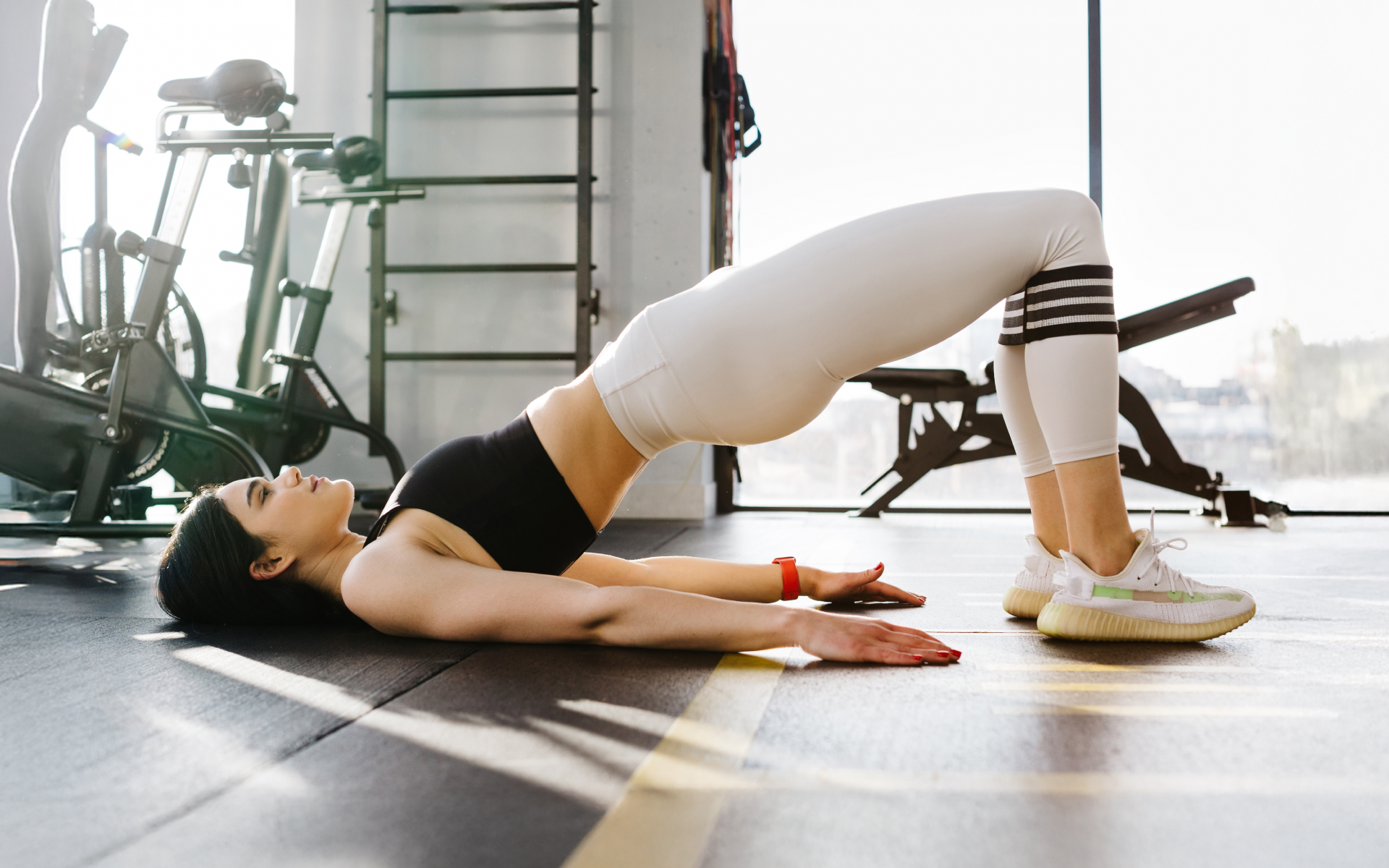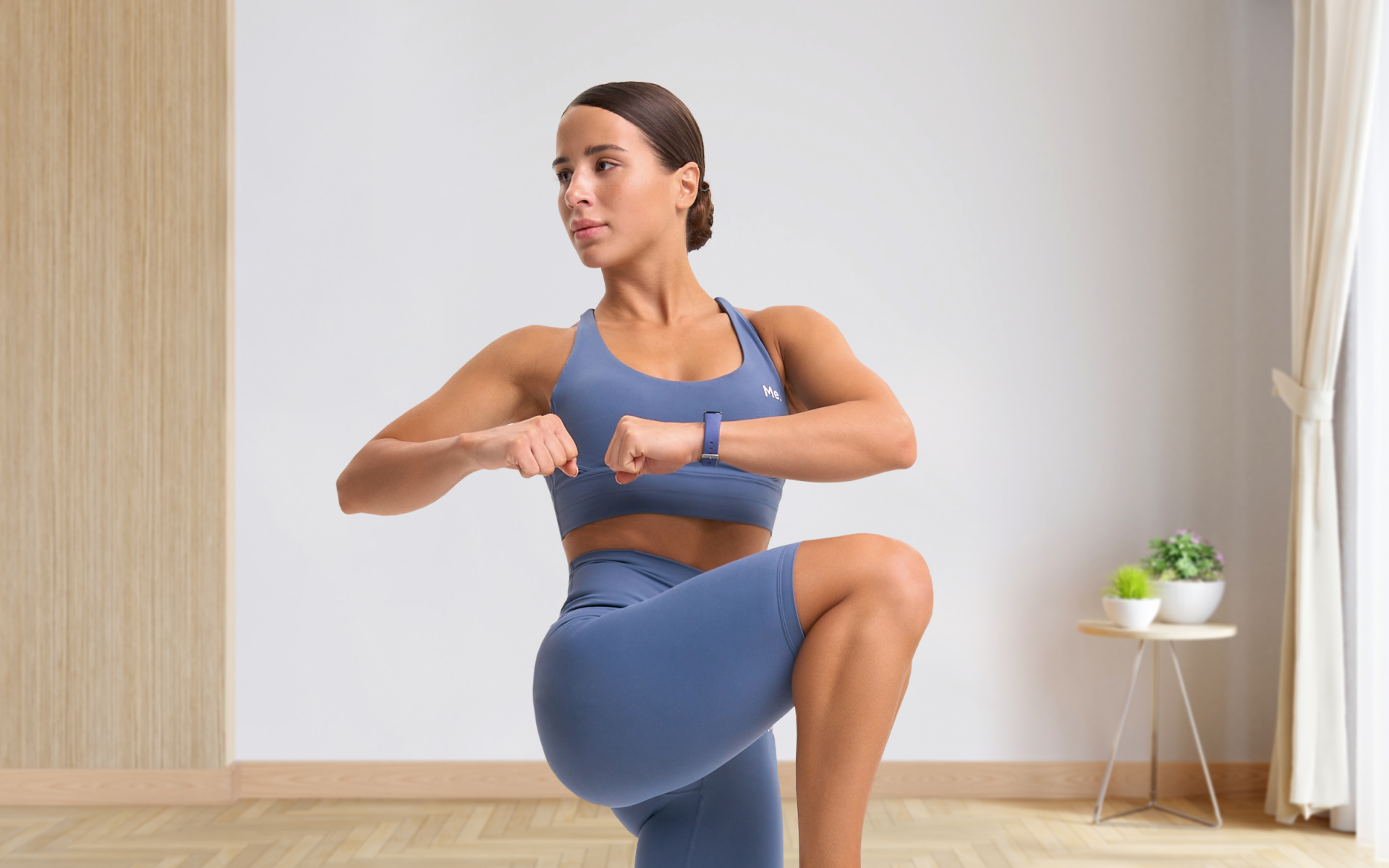A calisthenics beginner program is a structured workout plan that is focused on bodyweight movements to develop strength, endurance, and coordination. The foundation consists of key movement patterns, which ensures that proper technique is established first. The bonus is that calisthenics can be performed practically anywhere and requires no equipment, which makes it an accessible option for individuals with a low barrier to entry. It’s ideal for individuals who are new to fitness, returning after a break, or seeking a minimalist approach to training. Furthermore, calisthenics entails an essentially limitless amount of variations and progressions.
These programs emphasize fundamental, compound exercises such as push-ups, squats, lunges, planks, and leg raises. By engaging multiple muscle groups at once, calisthenics promotes functional strength, mobility, and joint health (1). Unlike traditional weight training, which is reliant on gym equipment or machines, calisthenics can be performed almost anywhere – from your bedroom to the local park. The word “calisthenics” is derived from the Greek kallos (beauty) and sthenos (strength), which reflects its emphasis on control, form, and aesthetic movement. Many practitioners appreciate the physical benefits such as increased muscle tone and fat loss and the mental benefits such as enhanced focus, discipline, and body awareness (2).
How Do Beginners Start Calisthenics?
Beginners should start by building a foundation of strength, coordination, and form through core movements that mimic natural human movement patterns. These include:
- Push-ups (chest, shoulders, triceps)
- Bodyweight squats (quads, glutes, hamstrings)
- Planks (core)
- Lunges (balance, leg strength)
- Glute bridges (posterior chain)
- Dead hangs or rows using a sturdy surface (back, grip)
Each movement teaches control and stability, which is essential before progressing to harder variations such as dips, pull-ups, or explosive movements (1).
A beginner may start with:
- 2-3 workouts per week
- 3 rounds of 4-6 basic exercises
- Moderate rest between sets (30-60 seconds) (3)
- An emphasis on form over reps
Progress tracking, such as noting rep counts or hold times, is the key for motivation and seeing measurable improvement (4). Beginners should also incorporate mobility work to improve their joint health and prepare the body for more advanced skills (5,6). You can read more about a simple calisthenics routine here.
What Is the Best Age to Start Calisthenics?
The beauty of calisthenics is that it’s adaptable to any age. Children and teens benefit from developing motor control, body awareness, and muscular coordination through movement-based play. Adults, particularly those in sedentary jobs, can use calisthenics to restore lost mobility and regain functional strength. For older adults, calisthenics offers a low-impact, joint-friendly method to maintain independence and quality of life (7).
Regardless of age, the key is individualization:
- Children can start with playful, supervised movements.
- Teens can build strength with bodyweight routines to support sports.
- Adults can use calisthenics for strength, physique, or fat loss goals.
- Seniors may focus more on balance, stability, and joint control.
When it comes to weight loss, progress is made by inches, not miles, so it’s much harder to track and a lot easier to give up. The BetterMe: Health Coaching app is your personal trainer, nutritionist, and support system all in one. Start using our app to stay on track and hold yourself accountable!
What Is the First Skill to Learn in Calisthenics?
The initial focus in calisthenics should be on mastering basic movement patterns and developing core strength. Core stability is essential as it underpins the ability to perform more advanced movements safely. Exercises such as the hollow body hold, planks, and controlled leg raises are excellent starting points to build this foundational strength (8).
Rather than skills such as handstands or muscle-ups, beginners should focus first on core engagement and control. This includes learning how to properly:
- Brace the core in a plank or hollow body hold
- Control descent in exercises such as squats and push-ups
- Maintain posture and alignment during movement
Mastery of these basics prepares the body for more advanced static holds (such as L-sits), dynamic skills (such as chin-ups), and freestyle movements (such as handstand push-ups or front levers). Skipping foundational strength increases the risk of plateau or injury.
Start here:
- Hollow body holds: 20-30 seconds
- Wall planks: full-body tension
- Scapular pulls: shoulder control
Read more: How to Get Better At Calisthenics – Going from Zero to Hero!
How Do I Start Calisthenics from Nothing?
Embarking on calisthenics from scratch involves:
1. Assessing Your Fitness Level: Understanding your current capabilities helps in setting realistic goals.
For example: Can you do a full push-up or hold a plank for 20 seconds? If not, modify it (e.g. incline push-ups, knee planks).
2. Learning Proper Form: Prioritize technique over quantity to prevent injuries.
Watch tutorial videos or consider a session with a coach to ensure safe mechanics (9).
3. Starting with Basic Exercises: Incorporate movements such as push-ups, squats, and planks.
Pick 4-5 movements and perform them consistently
Example beginner circuit:
- Incline push-ups x 10
- Squats x 15
- Glute bridge x 10
- Plank x 30 sec
- Rest and repeat for 2-3 rounds
4. Establishing a Routine: Consistency is essential – you should aim for regular sessions each week.
Schedule your workouts like appointments. Even 20 minutes, 2-3 times a week can yield results (10).
5. Progressing Gradually: Increase intensity and complexity as your strength and confidence grow. Add reps, reduce rest, or try harder variations once the basics feel easy.
Resources such as instructional videos, beginner-friendly programs, and consulting a fitness professional can provide guidance and structure. Refer to the beginner calisthenics exercises for more ideas.
How Long Should a Beginner Do Calisthenics?
Consistency beats intensity early on. For the first 6-8 weeks:
- Frequency: 2-3 sessions per week
- Duration: 20-45 minutes
- Focus: mastery, consistency, and injury prevention
After 2 months, many beginners report improved stamina, muscle tone, and confidence (11). From there, you can experiment with different program structures:
- Push/pull splits
- Skill-focused sessions (e.g. core day, balance day)
- Mobility and strength combined routines
The best calisthenics programs emphasize longevity, not burnout. This is why it’s important to start at whatever your current level is and not overexert yourself. Read more about calisthenics routine beginner programs here.
What Is an Easy Calisthenics Beginner Program to Start With?
Here’s a simple, full-body plan to get you started:
Beginner Bodyweight Routine (No Equipment Needed)
Complete 2-3 rounds:
- Incline push-ups – 8-12 reps
- Bodyweight squats – 15 reps
- Glute bridges – 12 reps
- Wall planks – 30 sec hold
- Step-back lunges – 10 per leg
- Wall slides or shoulder rolls – 10 reps
Optional Warm-up:
- Arm circles, hip circles, and light jogging in place (2-3 minutes)
Optional Cool-down:
- Hamstring stretch, child’s pose, shoulder openers (3-5 minutes)
This routine hits all the major muscle groups and builds strength, balance, and stability. As you improve, swap in:
- Regular push-ups
- Bulgarian split squats
- Hollow body holds
- Negative chin-ups
Another option to build consistency and mix it up a little more so you don’t get bored is to alternate between two different sessions. An example starting point is:
Day A
- Incline push-ups – 10-12 reps
- Wall plank shoulder taps – 20
- Step-back lunges – 10 each leg
- Glute bridges – 15 reps
- Bird-dog – 10 per side (hold 2 sec)
Day B
- Chair squats or air squats – 15 reps
- Incline rows or towel rows – 8-10 reps
- Dead bug – 10-12 reps
- Side plank (on your knees or feet) – 20 seconds per side
- Calf raises – 15-20 reps
Frequency: Alternate sessions across the week (e.g. Mon: A, Wed: B, Fri: A, Sun: B) Tip: Track your reps and form quality. Add a round or new variation every 2-3 weeks to keep challenging yourself. Once you’ve progressed from those, you could look to split the workouts into upper body, lower body, and core focus, in addition to accessory days. An example that follows all the movements above could be:
4-Day Calisthenics Split (Upper/Lower/Core/Accessory)
This intermediate structure allows for targeted strength development and recovery across the week. Each day has a clear focus while maintaining the full-body, functional nature of calisthenics.
Day 1 – Upper-Body Strength
- Push-ups (standard or diamond) – 12-15 reps
- Pike push-ups – 8-10 reps
- Incline or table rows – 10-12 reps
- Triceps dips (on a chair/bench) – 10 reps
- Side plank with reach – 20 seconds per side
Day 2 – Lower Body and Balance
- Bulgarian split squats – 10 per leg
- Wall sit – 30 seconds
- Glute bridge march – 10 per side
- Calf raises – 15-20 reps
- Step-through lunges – 10 per leg
Reasons why BetterMe is a safe bet: a wide range of calorie-blasting workouts, finger-licking recipes, 24/7 support, challenges that’ll keep you on your best game, and that just scratches the surface! Start using our app and watch the magic happen.
Day 3 – Core Focus
- Hollow body hold – 30 seconds
- Dead bug – 12 reps per side
- Leg raises or tucked raises – 10-12 reps
- Plank with reach – 20 reps alternating
- Side plank pulse – 10-12 reps each side
Day 4 – Mobility and Accessory
- Cat-cow and thoracic rotations – 5 reps each
- Wall angels or shoulder slides – 10 reps
- Hip flexor stretch and deep squat hold – 1 min each
- Banded or bodyweight face pulls – 15 reps
- Core breathing drills or box breathing – 2-3 mins
This split supports progressive overload, strength development, and joint-friendly training frequency. It’s particularly effective for those who are ready to move beyond general routines into more focused calisthenics practice.
Read more: Is Calisthenics Better Than Weights?
Key Concepts and Rest Protocols for Calisthenics
Understanding the “why” behind your workout structure is just as important as the exercises themselves. Here are some key training concepts and rest guidelines to help you progress effectively, avoid burnout, and build lasting results.
1. Master Form Before Volume
Always prioritize movement quality over speed or number of reps. Performing 5 perfect push-ups is more valuable than performing 15 with poor form. This protects your joints and builds better movement patterns.
2. Rest Depends on the Goal
Rest between sets and exercises serves different purposes depending on what you’re trying to achieve (12):
For Strength and Control (e.g. push-ups, rows, hollow holds):
- Rest 45-90 seconds between sets
- Allows for nervous system recovery and better form in the next set
For Endurance and Conditioning (e.g. circuits, high-rep bodyweight exercises):
- Rest 15-45 seconds between exercises
- Keeps heart rate elevated and builds muscular endurance
For Skill and Balance Work (e.g. bird-dog, plank shoulder taps):
- Rest 30-60 seconds between sides or sets
- Helps you maintain control and focus
For Core Stability and Breathing Drills:
- Rest 20-30 seconds, or use a work/rest format (e.g. 30s on/15s off)
- Keeps engagement high without fatiguing the stabilizing muscles
3. Full-Body Recovery
Try to rest for at least 24-48 hours between training similar muscle groups (e.g. don’t train your upper body on consecutive days unless the volume is very low). Use split routines or alternating focus days to manage fatigue (13).
Yes, calisthenics can feel challenging initially as it requires body control, coordination, and strength. However, starting with modified movements and focusing on consistency makes it progressively easier as your body adapts and your technique and strength both improve. The hardest part is mastering advanced skills such as muscle-ups, planches, or front levers. These require exceptional strength, control, and mobility to be built over time. For beginners, developing proper form, core strength, and body awareness is the first big hurdle. Not at all. Calisthenics is suitable for people of all ages and 25 is a great time to build strength and mobility. With consistent practice, most people see significant progress, regardless of when they start. It’s never too late to begin. Yes, 20 minutes can be effective, particularly for beginners. When done consistently, short, focused sessions improve strength, endurance, and mobility. Intensity, proper exercise selection, and progressive overload are the keys to making the most of a 20-minute calisthenics workout.Frequently Asked Questions
Is calisthenics hard at first?
What is the hardest thing in calisthenics?
Is 25 too old to start calisthenics?
Is 20 minutes of calisthenics enough?
The Bottom Line
If you’re looking for a simple, effective way to build strength, flexibility, and control without the need for equipment, a calisthenics beginner program is the perfect place to start. It’s accessible, adaptable, and focuses on mastering bodyweight fundamentals such as push-ups, squats, and planks. Whether your goal is fat loss, muscle building, or improved mobility, calisthenics can help you progress at your own pace. As long as you’re consistent and gradually challenge yourself with new variations, you’ll build a strong foundation that supports long-term fitness – no gym required. Start where you are, use what you have, and let your body become your gym.
DISCLAIMER:
This article is intended for general informational purposes only and does not serve to address individual circumstances. It is not a substitute for professional advice or help and should not be relied on for making any kind of decision-making. Any action taken as a direct or indirect result of the information in this article is entirely at your own risk and is your sole responsibility.
BetterMe, its content staff, and its medical advisors accept no responsibility for inaccuracies, errors, misstatements, inconsistencies, or omissions and specifically disclaim any liability, loss or risk, personal, professional or otherwise, which may be incurred as a consequence, directly or indirectly, of the use and/or application of any content.
You should always seek the advice of your physician or other qualified health provider with any questions you may have regarding a medical condition or your specific situation. Never disregard professional medical advice or delay seeking it because of BetterMe content. If you suspect or think you may have a medical emergency, call your doctor.
SOURCES:
- Protocol for Minute Calisthenics: a randomized controlled study of a daily, habit-based, bodyweight resistance training program (2020,nih.gov)
- Acute effects of exergame-based calisthenics versus traditional calisthenics on state-anxiety levels in young adult men: a randomized trial (2022, nih.gov)
- Comparison of muscle activity and tissue oxygenation during strength training protocols that differ by their organisation, rest interval between sets, and volume (2016, nih.gov)
- A Systematic Review of The Effects of Different Resistance Training Volumes on Muscle Hypertrophy (2021, nih.gov)
- Examining the Influence of Warm-Up Static and Dynamic Stretching, as well as Post-Activation Potentiation Effects, on the Acute Enhancement of Gymnastic Performance: A Systematic Review with Meta-Analysis (2024, nih.gov)
- What We Do Not Know About Stretching in Healthy Athletes: A Scoping Review with Evidence Gap Map from 300 Trials (2024, nih.gov)
- Are flexibility and muscle-strengthening activities associated with functional limitation? (2022, nih.gov)
- The Role of Neuromuscular Control of Postural and Core Stability in Functional Movement and Athlete Performance (2022,nih.gov)
- Japanese radio calisthenics prevents the reduction of skeletal muscle mass volume in people with type 2 diabetes (2020, nih.gov)
- The Sleep and Recovery Practices of Athletes (2021, nih.gov)
- The Effects of Creatine Supplementation Combined with Resistance Training on Regional Measures of Muscle Hypertrophy: A Systematic Review with Meta-Analysis (2023,nih.gov)
- Effect of Rest Interval Between Sets in the Muscle Function During a Sequence of Strength Training Exercises for the Upper Body (2021, nih.gov)
- Effects of Resistance Training Frequency on Measures of Muscle Hypertrophy: A Systematic Review and Meta-Analysis (2016, nih.gov)
